Video MGMT System
 Access Control
Access Control
Voice & Data Wiring
 Burglar Alarm
Burglar Alarm
 Fire Alarm
Fire Alarm
Video MGMT System
Voice & Data Wiring
All businesses, large and small, require different types of commercial-grade security cameras for each area they surveil.
That's why our team here at Mammoth Security has put together this brief introduction to the 8 main types of security cameras and why you would choose one over another for each space you need to monitor.
The best business security cameras are hardwired for reliability, provide high-resolution footage for suspect identification, use secure Internet protocols for remote access to footage and management tools, and apply artificial intelligence for enhanced situational awareness and efficient investigations. And the best security camera systems place different camera types where they'll capture the clearest and most actionable video surveillance.
To develop the best business surveillance system for your commercial space, it's necessary to consider your video surveillance needs and how they align with the functionalities of the 8 main types of commercial-grade security cameras.

Dome cameras are encased in dome-shaped housings that can resist vandalism and make it difficult for people to know what they're recording. Domes are the most discreet camera type, and they provide wide-angle views. Their biggest drawback is difficulty capturing high-quality footage of distant objects. Domes are recommended for large, open sites like dining halls where people need not be reminded that they're on camera.

Turret cameras have a tri-axis turret-style design that allows them to rotate widely in socket-like mounts. Turret security cameras are able to capture HD-resolution footage of subjects both up close and at a distance.
As one of the least compact and most noticeable types of security cameras, bullet cameras provide excellent deterrence. Their relatively large form also provides enough internal space to accommodate sharper zoom-ins than most turret cameras.
PTZ (Pan-Tilt-Zoom) cameras pan, tilt, and zoom for both general field coverage and detailed, close-up footage. Of all the different security camera types on the market, they provide the greatest audio and video quality. What's more, their motorized parts let users remotely manage zoom levels and angles of view.
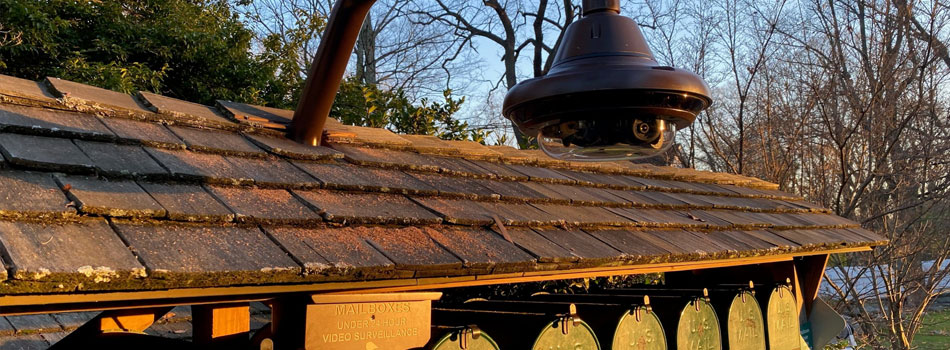
Multi-sensor cameras have three to four lenses and sensors within a single housing. Differing sensitivities allow their sensors to clearly capture a wide range of viewing angles and depths of field. Multi-sensor cameras can even stitch together several shots for one expansive, ultra-wide image.
Fisheye cameras, also known as 360-degree cameras, have ultra-wide-angle lenses that produce full spherical images. These business security cameras are best for surveilling large, open areas. The two main downsides to fisheye cameras are the distortions that necessarily result from 360-degree views in a single 2-dimensional shot and their inability to capture high-resolution footage of distant objects.
License plate recognition (LPR) cameras use artificial intelligence to recognize license plates and read their digits. They're often used in parking lots, toll booths, and other areas where vehicles pass.
While not as popular as other security camera types, box cameras are modular units that allow you to change out parts like lenses and sensors if you ever want to upgrade your security camera. These can be used both indoors and outdoors, which allows for live video surveillance or viewing recorded video over a CCTV monitor.
The best business surveillance system for any commercial space combines camera types at different viewing angles and zoom levels to cover all sensitive areas with high-definition monitoring.
For example, if you need to identify faces at a point of sale, you'd consider high-definition indoor PTZs or bullet cameras. For security at a large parking lot, you'd think about a combination of LPR cameras to read license plates, outdoor dome cameras to resist vandalism and provide wide-angle footage, and outdoor bullet or turret cameras to achieve a variety of viewing angles at different depths.
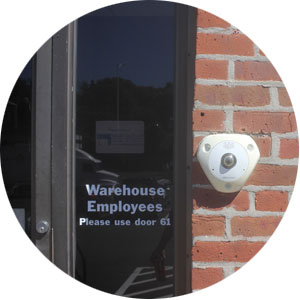
Dome and fisheye (or 360-degree) cameras capture the widest viewing angles of all security cameras. They're recommended for surveilling large, open spaces. The downside to their compact design is a constricted focal length that prevents clear footage of distant objects.
Turret and bullet cameras are flexible enough for many angles and depths of field, but they can't capture the same kind of ultra-wide-angle views as dome or fisheye cameras. They're recommended for monitoring hallways, entrances, and other spaces that aren't especially wide but that do require high-resolution video quality.
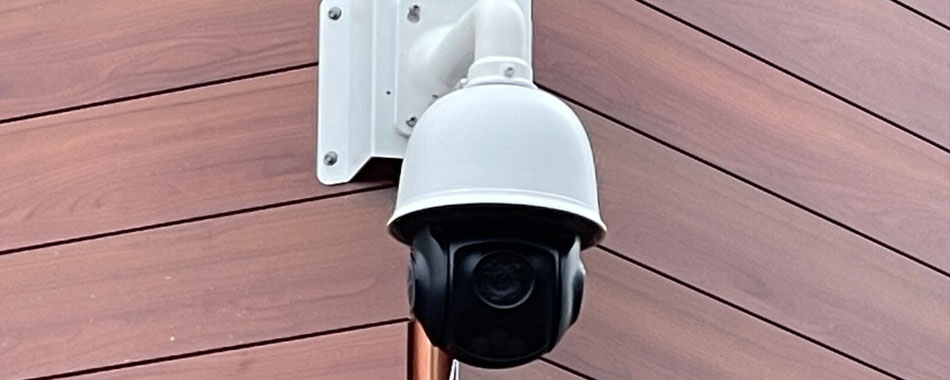
PTZ cameras can be remotely controlled to pan horizontally, tilt vertically, and zoom in and out—capturing many fields of view at differing depths while maintaining high-definition footage.
Multi-sensor cameras combine three or four lenses and image sensors in one housing. They can zoom in and out like a PTZ camera and have enough unique sensors to capture high-quality footage in many different environments. They can even stitch together images from multiple sensors to provide the kinds of ultra-wide views associated with dome and fisheye cameras.
License-plate reading (LPR) cameras usually offer a range of depth of around 50 to 80 feet. However, factors like lighting and the size and reflectivity of a license plate can affect an LPR camera's actual viewing range.
Dome cameras are more discreet and resistant to vandalism than other camera types because of their glass housing, which can be either clear or tinted.
Turret cameras have a ball-and-socket design. Their main camera component sits in the socket and looks like a sliced sphere—with its lens at the flat edge. While turrets aren't as discreet as dome cameras, they're also compact and can be blended into background environments.
Bullet cameras provide the most deterrence because of their hard-to-ignore, aggressive shape. They aren't a great choice for upscale indoor environments, but they can dramatically reduce shoplifting and other unwanted behaviors.
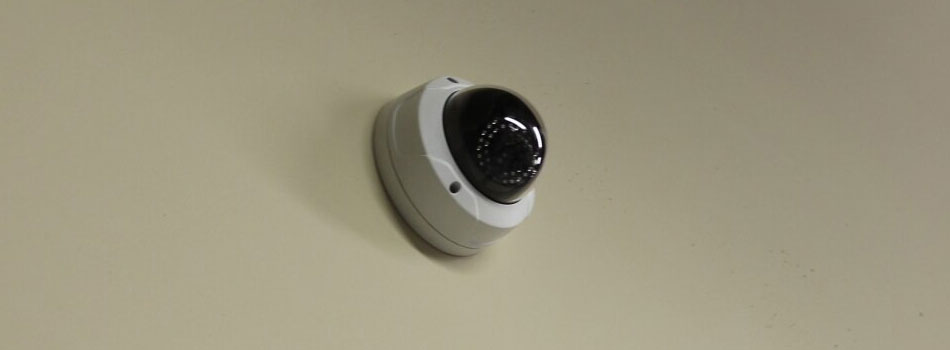
LPR cameras often look like bullet cameras, and most of them are weatherproof for the outdoors.
A PTZ (pan-tilt-zoom) camera typically has a cylindrical shape. The lens is at the front, and the pan-tilt motors are at the rear. The lens is often surrounded by a clear or tinted dome, but PTZs don't blend in with most settings as easily as dome cameras.
Multi-sensor cameras have many components behind a clear or tinted housing. They are similar in appearance to dome cameras but are much larger to accommodate multiple lenses, sensors, and motors.
Turret and bullet cameras can be mounted vertically on walls or poles, horizontally on flat surfaces, sloping at slanted angles, and upside-down on ceilings, eaves, and other overhangs. They can even be installed on trees.
Dome cameras are similarly flexible when used indoors, but outdoor dome cameras should always be mounted upside-down to prevent freezing water from cracking their seals.
Multi-sensor cameras are typically mounted on walls and ceilings using a bracket. Like dome cameras, they should be mounted upside-down when installed outdoors.
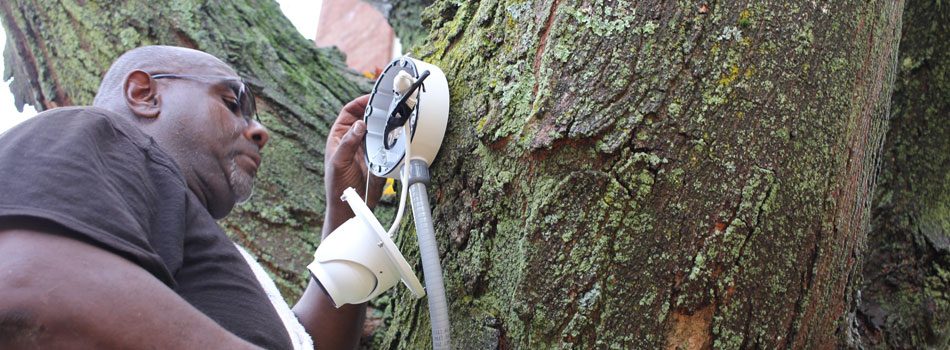
Dome, fisheye, and turret cameras can be installed in tight spaces thanks to their compact constructions.
While most camera types come in indoor models and weatherproof outdoor models, almost all license-plate recognition cameras are designed for the outdoors.
Of all the different types of security cameras for business, PTZs provide the most remote control options for easy repositioning after professional installation.
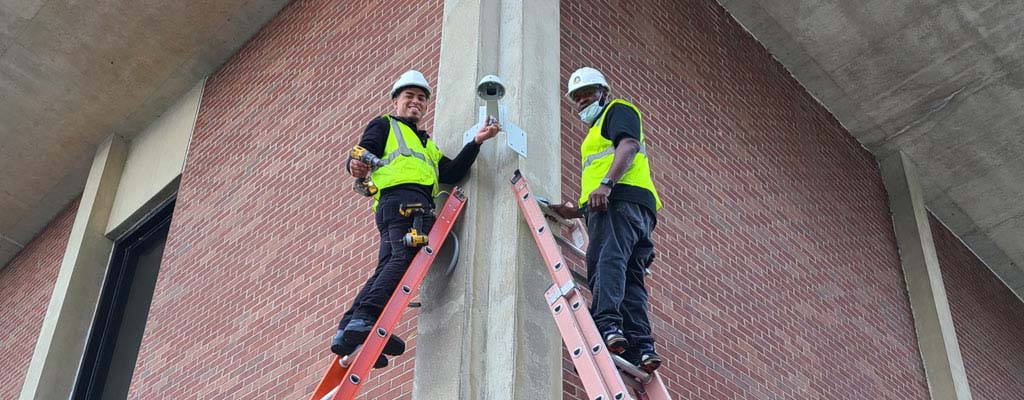
Our team at Mammoth Security understands security cameras, the benefits, and drawbacks of individual types and models, how to place them for comprehensive coverage, and how to mix and match them for a commercial security camera system that provides a massive ROI.
If you're ready for the next step toward securing your commercial property, take us up on a free, zero-obligation site survey. Just fill out the simple form below, and we’ll quickly get back to you to schedule your complimentary consultation.
You’ll meet a friendly member of our team as we walk through your property, discuss your security concerns, spot points where your surveillance system can be improved, and begin to develop a business security camera system that’s expertly tailored to your site’s unique layout and video surveillance needs.
NOT COMPLETELY SURE?
860-748-4292A 360 camera is sometimes called a fisheye camera because it uses a fisheye lens to capture extremely wide fields of view. A fisheye lens is a type of ultra-wide-angle lens that produces distorted, spherical images.
The name "fisheye" comes from the fact that the distorted image produced by the lens can resemble the distorted view of the world seen by a fish in a round bowl.
The best CCTV camera is both HD and IP. HD security cameras provide high-definition footage, and IP (Internet Protocol) cameras safely transmit data over the Internet for easy remote viewing and management. All of the best commercial security camera systems are HD and IP.
There is no real difference between security cameras and surveillance cameras in the security industry. The terms are used interchangeably. That said, some people differentiate them by defining surveillance cameras as those which record footage 24/7 and security cameras as those that record footage only when movement is detected.
The length of time that business security cameras keep footage varies depending on factors like the brand and model of the camera, the capacity of the video storage system, and the retention policy of the business. In fact, footage from business security cameras is often stored for just 24 hours unless singled out for an investigation.
Wired CCTV cameras are much better than wireless cameras because they are reliable and always transmit footage clearly.